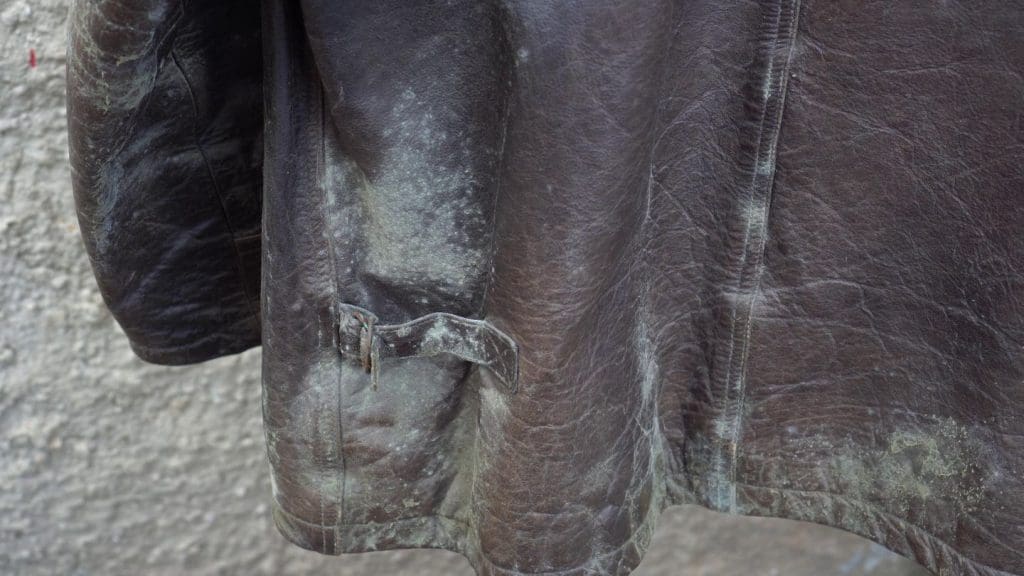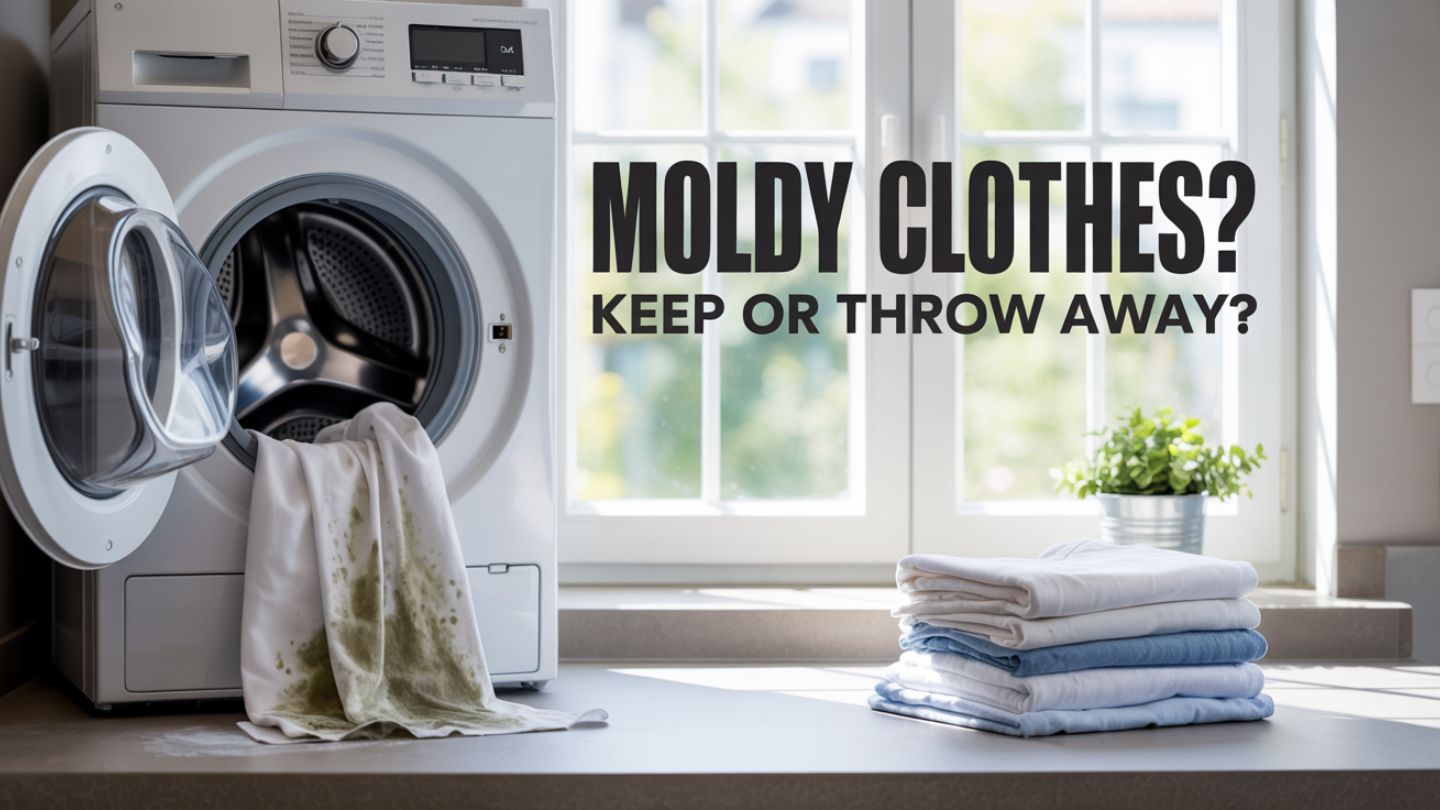Discovering mold on your favorite clothes can be both frustrating and concerning. That musty smell and those dark spots aren’t just unpleasant; they could signal potential health risks and damage to your garments. But before you toss everything in the trash, it’s worth asking: can moldy clothes be saved? The answer depends on the extent of the mold growth and how quickly you act.
In this blog, we’ll explore what makes mold on clothing dangerous, when one can safely clean and salvage affected garments, and when it’s best to call in professional help. You’ll also learn practical, expert-approved cleaning methods and simple prevention tips to keep your wardrobe fresh, safe, and mold-free.
Key Takeaways
- Mold on clothes can pose serious health risks, especially for individuals with respiratory conditions or weakened immune systems.
- Immediate action can salvage moldy clothes by assessing the extent of mold growth and using effective cleaning methods, including pre-treatment and washing.
- Preventive measures, such as proper storage and maintaining cleanliness, are crucial in avoiding mold growth on clothing.
Is Mold on Clothes Dangerous?
Have you ever wondered if mold on clothes is more than just an unsightly nuisance? The truth is, moldy garments can pose significant health risks. Exposure to mold spores on clothing can lead to:
- Respiratory symptoms such as coughing and sneezing
- Irritation of the eyes and skin
- Allergic reactions
- Respiratory problems, which can be particularly severe for those with pre-existing conditions like asthma.
Individuals with compromised immune systems are particularly at risk from mold on clothes. Asthmatic individuals and those with weakened immune defenses face higher vulnerability. Approximately 28% of the population is highly susceptible to mold-related health problems. Therefore, addressing moldy clothing promptly is essential.
Recognizing the health risks of moldy clothes emphasizes the visible signs of the need for immediate action when you discover mold. Ignoring the issue can result in prolonged exposure and serious health consequences.
When dealing with potential exposure, it’s also important to understand what happens during a mold inspection, as this process reveals hidden sources of contamination and prevents cross-contamination within your living space.
Can You Salvage Moldy Clothes?

Before discarding your favorite shirt or dress, consider whether your moldy clothes and moldy items can be salvaged. The potential to save moldy garments depends on factors like the extent of mold growth and fabric type. Natural fibers such as cotton and wool are more prone to mold damage compared to synthetics.
Assessing the duration of mold growth is a key step in determining if clothes can be saved. Extended exposure to mold can cause irreversible damage, so acting quickly is vital. Addressing mold as soon as it’s noticed improves the chances of successful removal.
Inspect white clothes for mold coverage and fabric integrity before deciding on cleaning or disposal. Significant fabric weakness or damage may indicate they’re beyond salvage. However, recent mold growth on clothing in good condition can often be treated with effective dry cleaning methods to remove mold from clothes.
Taking immediate action increases the likelihood of salvaging moldy clothes. Promptly addressing the issue prevents further mold development and helps restore garments.
To minimize future risks, maintaining a healthy home environment through regular mold inspections is crucial. These inspections help identify hidden mold issues early and keep humidity levels balanced to protect both your clothing and indoor air quality.
When to Consider Professional Help
Professional help may be necessary to effectively handle moldy clothes, especially if the mold covers an area larger than 10 square feet. Mold remediation specialists have the expertise and equipment to effectively contain and eliminate mold.
Mold removal specialists eliminate mold and identify mold as well as the source of moisture contributing to mold growth. This comprehensive approach prevents future mold issues and ensures thorough cleaning.
For delicate fabrics that may be damaged by mold, professional evaluation and treatment are advisable. If mold stains persist despite your efforts, seek professional help.
Understanding the questions to ask during a professional mold inspection can also help you choose the right specialist and ensure that every step of the process, from detection to remediation, is handled correctly and safely.
Preventing Mold on Clothes

Preventing mold on clothes involves maintaining cleanliness and dryness. Never store clothes damp or dirty, as mildew thrives on moisture and stains. Use breathable cloth bags instead of plastic for storage to prevent moisture accumulation.
To ensure proper air circulation and maintain clothes in good condition when storing, consider the following tips:
- Avoid overcrowding to allow proper air circulation.
- Use desiccant packets or silica gel to absorb moisture and keep storage areas dry.
- Hang clothes with space between them, especially in humid conditions, to facilitate air flow.
Spraying clothes and other items with water repellents before storage adds an extra layer of protection against mildew. Following these preventive measures significantly reduces the risk of pre-treating mold development on your damp clothes.
You can also strengthen your prevention routine by following key mold inspection actions at home, such as monitoring humidity levels, sealing crawlspaces, and checking for hidden leaks, to create an environment where mold struggles to survive.
Final Thoughts
Dealing with moldy clothes can be challenging, but with the right knowledge and quick action, you can often restore your garments and prevent future growth. This guide has covered everything from identifying the dangers of mold exposure to effective cleaning methods, prevention strategies, and knowing when to seek professional help. Acting immediately and following proper cleaning techniques are essential to protect both your clothing and your health while ensuring mold doesn’t return.
For professional assistance, Mold-B-Gone offers expert services for mold inspection in Atlanta to detect and address mold issues before they spread. We also provide a full range of remediation and cleaning solutions, including commercial mold remediation for businesses, crawlspace encapsulation to protect your home’s foundation, duct cleaning to improve air quality, and eviction clean-outs for thorough property restoration.
Frequently Asked Questions
How long does it take for mold to grow on clothes?
Mold can start developing on damp clothes in as little as 24 to 48 hours, especially in warm and humid environments. To prevent mold, always dry clothes completely before storing them and avoid leaving wet laundry in the washing machine.
Can dry cleaning remove mold from clothes?
Yes, professional dry cleaning can often remove mold and musty odors from delicate fabrics that can’t handle hot water washing. However, if mold growth is severe, even dry cleaning may not fully restore the garment.
What’s the difference between mildew and mold on clothes?
While both are fungi, mildew usually appears as a light, powdery growth on fabric surfaces, whereas mold tends to be darker, thicker, and can penetrate deeper into the material. Both can cause odors and damage, but mold is typically more harmful to health.
Can I use bleach to remove mold from colored clothes?
Bleach is effective at killing mold, but it can fade or damage colored fabrics. For non-white clothes, use safer alternatives like vinegar, Borax, or oxygen-based cleaners designed for color protection.
How can I prevent mold in my closet or wardrobe?
To prevent mold, keep closets well-ventilated and dry. Use silica gel packets or dehumidifiers, avoid overcrowding, and clean regularly. You can also check for hidden leaks or moisture buildup, a common cause of mold growth in storage areas.

